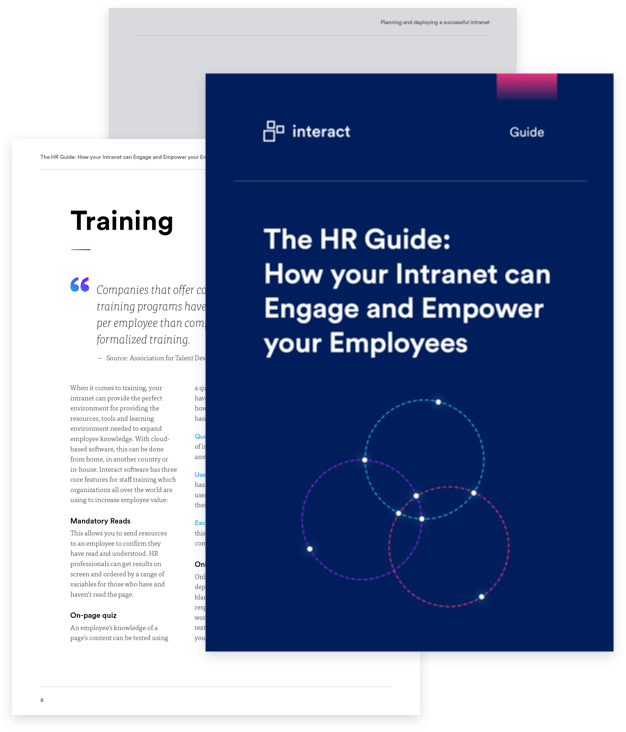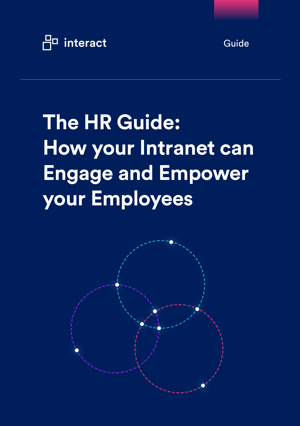The importance of employee recognition is often overlooked – are you aware of the impact?
Employee recognition is essential for motivating, retaining and fully engaging our employees. However, it can also be a considerable burden for any leader.
Thanks to the ever-developing age of digital, we are accustomed to real time interactions in our daily lives. Now, employees expect – and respond – to the same approach when it comes to recognizing their contributions within the workplace.
This means the days of annual appraisals and salary as the sole driver for employees are behind us. Newer demographics in the workplace want continual coaching, conversations and communication – they need agile performance management and instantaneous feedback.
8 out of 10 Millennials think they deserve to be recognized more for their work – a growing trend.
The trouble is, if you’re the one charged with meeting those expectations and delivering a positive employee experience – whether you have 50 employees on your books, or 5000 – creating a culture of recognition can be a considerable challenge.
What employee recognition is – and what it isn’t
Before we explore how and why employee recognition can be a central part of our business strategy, let’s take a moment to consider what it actually is.
One of the biggest – and most common – mistakes made by business leaders is confusing employee recognition with reward / incentive programs.
US organizations spend over $100 billion annually on incentive programs, according to the HRM Report.
Yes, structured reward and incentive programs have a vital role to play in the process of employee recognition – but in some instances, they may be counterintuitive, and unnecessarily costing you.
This is due to what social psychologists refer to us the ‘overjustification effect’. Simply put, once you place an expected external incentive – such as money, prizes or rewards – on a task, a person’s intrinsic motivation to perform that task decreases. Remove or lower the reward that they were expecting, and the motivation and interest is gone: the reward becomes an expectation. There must be a better way.
82% of employees think it’s better to give someone praise than a gift.
What should recognition look like?
At the simplest level, it needs to be about the process of communication from management to employee for a ‘job well done’. The HR Council capture it perfectly in their definition here:
Employee recognition is the acknowledgement of an individual or team’s behavior, effort and accomplishments that support the organization’s goals and values. Recognition is not one-size-fits all. Thought needs to go into what would be appreciated by the person being recognized.
Recognition doesn’t necessarily need to cost you money; it goes beyond a structured and defined process. It should be part of the fabric of your culture as a business. And it should be flexible and adaptable, depending on the individual and the circumstances. Easier said than done, right?
The importance of employee recognition
When companies prioritize recognition, there’s a lot of opportunity for them to build employee engagement and get workers excited about their contributions.
As a refresher, let’s consider the profile of 3 types of employees we typically find in any organization:
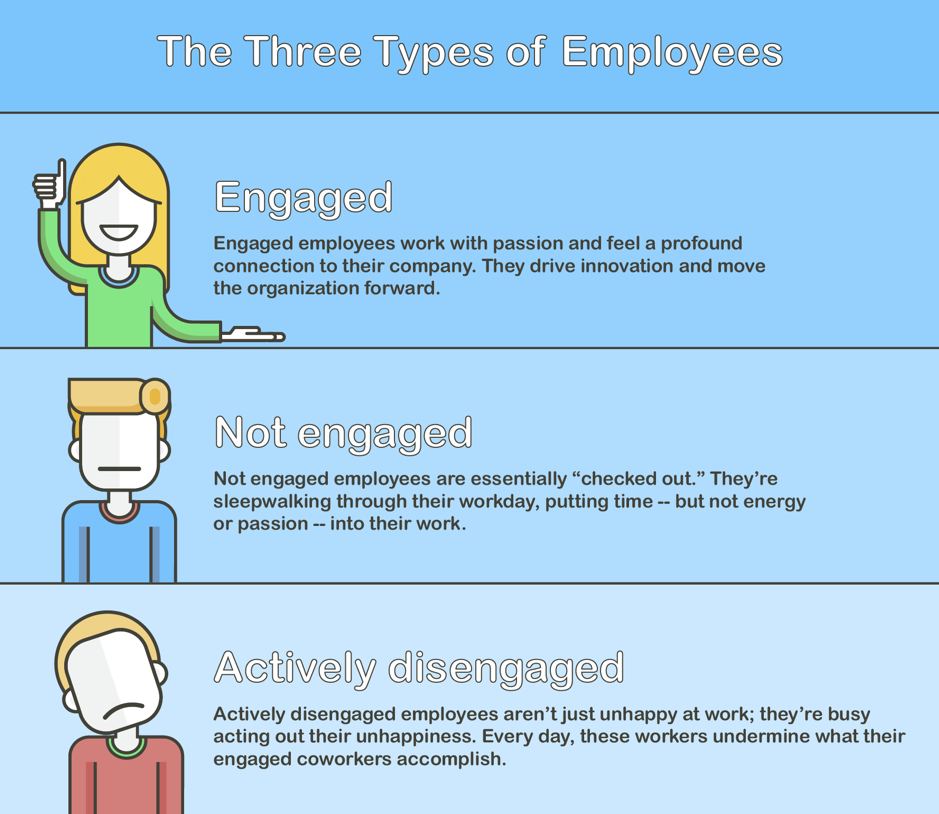
Recognizing the efforts of employees and ensuring regular feedback is essential for retaining the passion of engaged employees – and preventing the negative impact of disengaged ones.
Regular recognition is also associated with:
- Increased productivity and motivation – the act of recognizing desired behavior increases the repetition of the desired behavior, and therefore productivity. This is classic behavioral psychology. The reinforced behavior supports the organization’s mission and key performance indicator
- Greater employee satisfaction and enjoyment of work – more time spent focusing on the job and less time complaining
- A knock-on impact on customer experience, loyalty and satisfaction scores
- Greater financial performance and business outcomes
- Teamwork between employees is enhanced
- Better safety records and fewer accidents on the job
- Lower negative effects such as absenteeism and stress
Organizations with the most sophisticated recognition practices are 12 times more likely to have strong business outcomes.
The concrete, documented benefits of recognition don’t stop there. According to Bersin & Associates, companies with good recognition programs have 31% lower voluntary employee turnover. Another study states that spending 1% or more of payroll on recognition helped 85% of companies see improved engagement.
If spending so little has such universal results, why aren’t more people doing it?
Thanksgiving at work is still failing to thrive
It’s the responsibility of senior management to make sure that employees are both fulfilled by their work and happy in their environment. Your employees are your most valuable asset: without them, you would have no business, no livelihood.
Yet too many organizations do not do enough to show their employees how much they matter.
69% of employees say they would work harder if they felt their efforts were better appreciated.
Let’s read between the lines of that figure. We aren’t only looking at 69% of employees saying that recognition is a positive thing. We’re looking at 69% of employees who are saying they aren’t currently appreciated enough, and in addition they’re explicitly stating that they would work harder if that trend was reversed.
Employees offering to work harder and spelling out exactly what they need to make that happen! This should be every manager’s dream. Not only that, but what those employees are asking for takes minimal effort on the part of their organization.
82% of employees don’t think they’re recognized for their work as often as they deserve, according to BambooHR.
Clearly, we’re missing a trick. So, how can we embed a culture of recognition?
Employee recognition: a multi-pronged plan of attack
We’ve already highlighted that not only is recognition distinct from rewards and incentives, but that different employees respond to different forms of recognition. Establishing your own employee recognition strategy, therefore, will require a multi-pronged plan of attack.
We’ve identified 4 key elements to successfully create a culture of recognition in your business:
1.) Establish a values-based recognition program:
The best examples of employee recognition are truly embedded into the culture of your organization. Lead from the front with a formal recognition program.
Traditionally, these programs have focused on the easier to define and measure metrics, such as length of service or reaching of internal milestones. While this continue to have a place, the focus needs to shift to celebrating employees who embed and demonstrate the values of your business; for example, a willingness to go above and beyond, to innovate, or perhaps communicating effectively.
According to the 2015 Globoforce Employee Recognition Survey, a values-based approach has measurable impact on business outcomes including engagement, retention, safety, wellness, employer brand and even cost control goals. While it may be more difficult to establish upfront, the long-term gains are extensive.
68 percent of values-based programs perceived a positive impact on retention, vs. 41 percent for non-values-based programs.
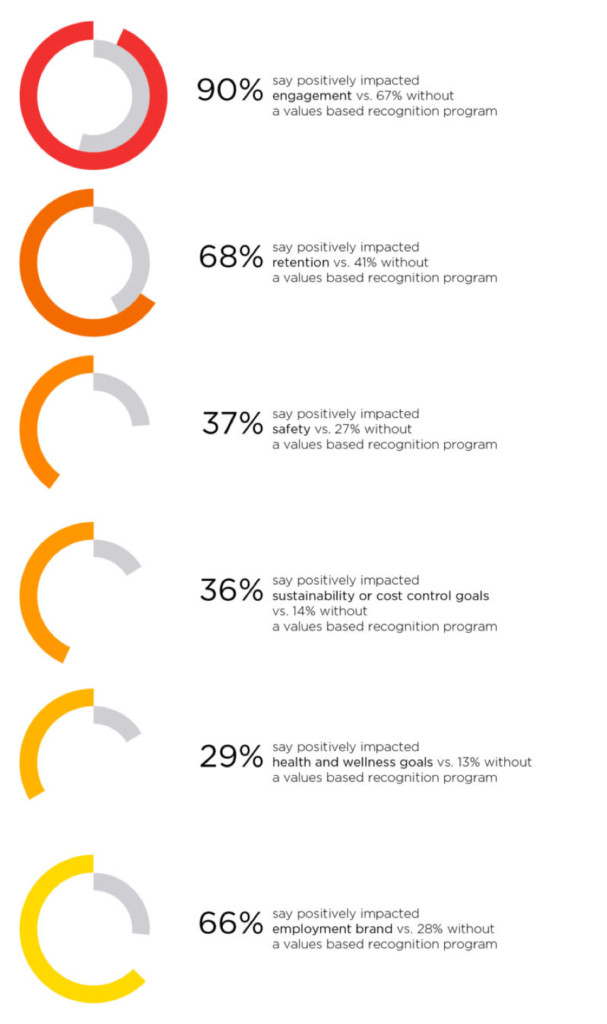
2) Combine informal and formal methods of recognition:
Support your formal recognition program with ad-hoc and informal methods, ensuring you cater to the different demographics and personalities within your organization.
This may range from a simple, sincere verbal “thank you” or a personal note, through to grabbing some team treats, an after-work drink or lunch, or perhaps recognizing individuals within team meetings or a milestone celebration – such as an end of project party. Organizations have also successfully authorized micro rewards such as ‘hour-off’ certificates or early finishes to distribute at their discretion.
3) Upskill managers to become effective coaches, mentors and agile performance managers
Ever heard the mantra, “Employees don’t leave companies, they leave managers” ? Don’t underestimate the influence and power of middle managers when it comes to your employee recognition strategy.
We’ve written previously about the impact of managers on workplace engagement and productivity and the same advice carries here: provide training and support for managers to empower them as coaches and mentors. They need to understand the value and strategic importance of employee recognition, and be upskilled in how to show appreciation for employee contributions and effort.
When asked what leaders could do more of to improve engagement, 58% of respondents replied, ‘Give recognition’.
4) Facilitate peer-to-peer recognition
To make recognition a true part of your business culture, it must be embraced and adopted by all – not the selective few.
The growing popularity of peer-to-peer recognition programs and the use of gamification and virtual recognition are testament to the important role of peer recognition, and indicate how to get everyone involved. Empower your employees with the tools and processes to acknowledge the achievements and efforts of their peers and encourage them to contribute. Below, we explore how.
Peer-to-peer recognition is 35.7% more likely to have a positive impact on financial results than manager-only recognition.
What does employee recognition cost you?
What does giving recognition actually cost you, as an employer?
That’s a good question and might help explain why appreciation isn’t a priority for companies across the board.
The organization Cutting Edge PR has an excellent blog post on the subject of employee recognition. In it, they elaborate on the costs and benefits of a recognition program.
Cutting Edge PR lists the costs of having a recognition program as:
- Time spent in designing and implementing the program
- Time taken to give recognition
- Dollar cost of the recognition items given
- Time and cost of teaching people how to give recognition
- Costs of introducing a new process
However, if we look back to the section on the importance of employee recognition, it’s clear the benefits far outweigh the costs. But what if even those costs could be drastically cut?
With the rich landscape of digital tools for businesses that now exist, it’s easy to find something with a recognition program built in. In that case, you can eliminate four of the five points in the list of costs. You’re still left with the dollar cost of the recognition items given, but the rest of the concerns are either eliminated entirely or addressed in the process of implementing your digital solution.
Appreciation, intranet style
The benefits of an intranet are far reaching. They help to drive productivity, share knowledge among colleagues, and boost engagement, among other uses.
One key advantage of an intranet is its capacity for employee appreciation and recognition. There are many ways an intranet lets you show appreciation to your employees or coworkers.
Interact’s rewards program takes care of the official process of recognition, both on a peer-to-peer and a manager-to-employee basis.
When a worker sees that one of their colleagues or staff has made an exception effort in their job, perhaps helping to carry a project or staying after hours to assist a colleague, they can send tokens of their appreciation to that person. Those tokens (called different names, according to how a company brands its intranet, of course) add up, and workers can eventually redeem them for whatever items the company wants to offer.
This is a powerful and tangible way of offering recognition. Employees get not just a “Thank you” but material prizes. This says to them, “You are worth the cash and effort of ordering this prize because of the value your work brings to us.” What’s more, the thank you is displayed on your intranet timeline, visible to all – ensuring that recognition is a transparent part of your business.
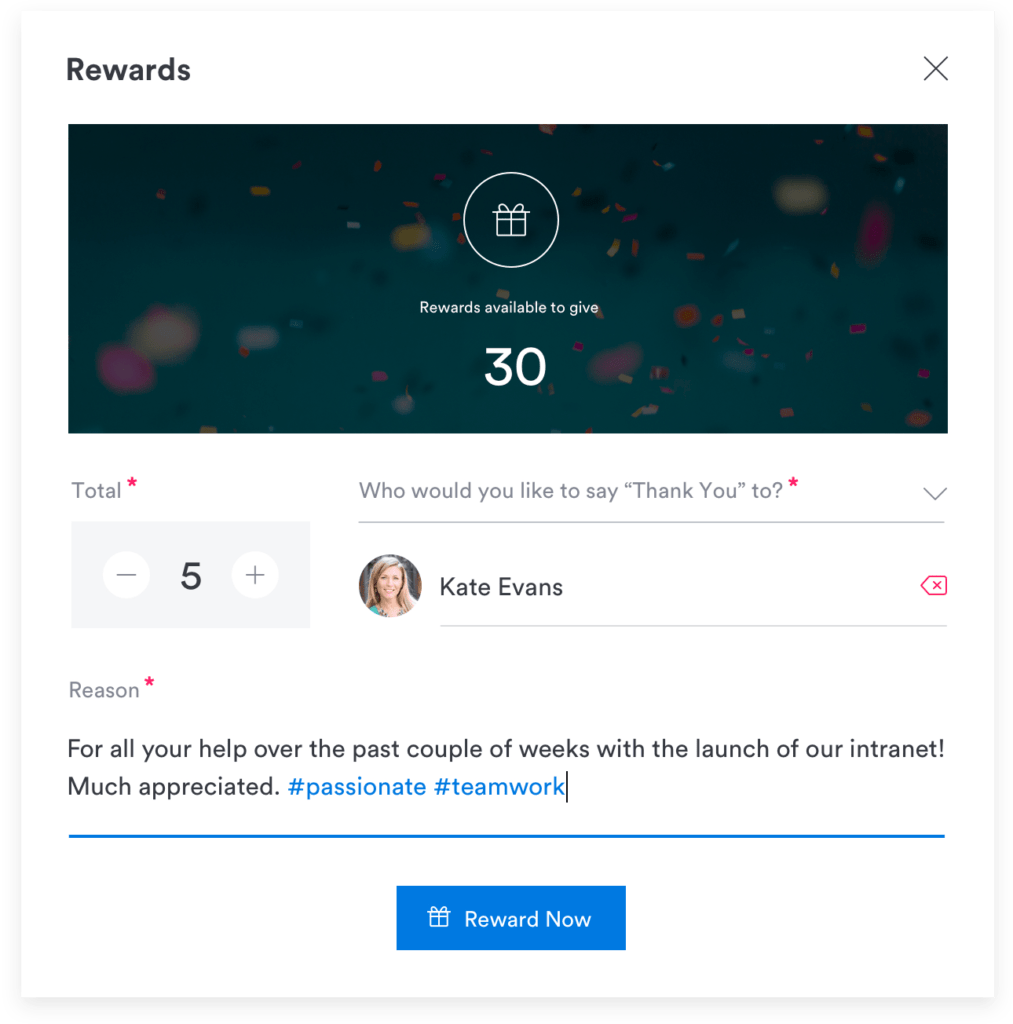
This is not, however, the only way to give recognition over an intranet!
The most widely used tools on company intranets are collaborative ones. Blogging and forums are two standard examples, letting employees share knowledge and reach out to one another with important questions.
These are inherently social tools, another way for coworkers to interact throughout their work day. For those who don’t work in the same office or who spend their days with their head buried in their work, this may be their only interaction with coworkers.
They are also fertile grounds for employee recognition. A simple “like” or “comment” on a post is a powerful way to tell someone that you appreciate their insight. Just think about what it might mean to someone to have their boss comment on a blog post of theirs. Many employees remain disengaged because they don’t feel listened to by their supervisors. Commenting on a blog post shows that you not only listened but were intrigued. Now that is some powerful recognition.
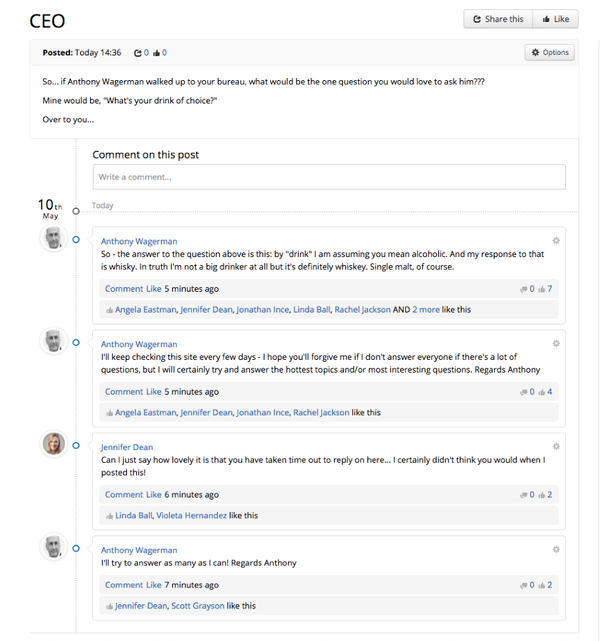
Recognition – a constant consideration
Employee recognition programs have a key role to play, but a true culture of recognition is a multi-faceted, ongoing effort that needs to penetrate all areas of your business.
Make sure you take the time to say thanks to your employees. Tell them that you’re grateful to them for the hard work and long hours they surely put in. Tell them specifically why they’re valuable to the company, and offer them tokens of your gratitude in whatever form you can – be those words or something material. You’ll reap the benefits of those actions long after the event itself: making recognition a no-brainer.
